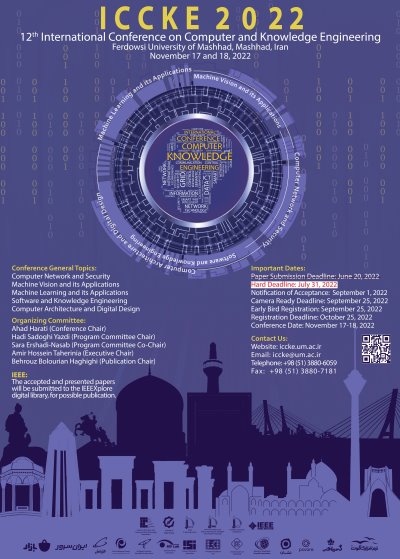0% Complete

Authors :
Keywords :
Abstract :
List of archived papers
Elham Mahmoudabadi - Esmaeil Mollaahmadi
Fatemeh Fouladi - Ali Rostami - Hedieh Sajedi
Mohammad Dehghani - Behrouz Bokharaeian - Zahra Yazdanparast
Amir Masoud Heidari Orojloo - Morteza Keshtkaran
Alireza Javaheri - Arsham Gholamzadeh Khoee - Saeed Reza Kheradpisheh - Hadi Farahani - Mohammad Ganjtabesh
Shayan Ramazi - Setare Shabani
Athareh Fatemian - Bahman Zamani - Marzieh Masoumi - Mehran Kamranpour - Behrouz Tork Ladani - Shekoufeh Kolahdouz Rahimi
Mona Sadat Mohsenzadeh - Ghosheh Abed Hodtani
Alireza Jahandoost - Mahboobeh Houshmand - Seyyed Abed Hosseini




